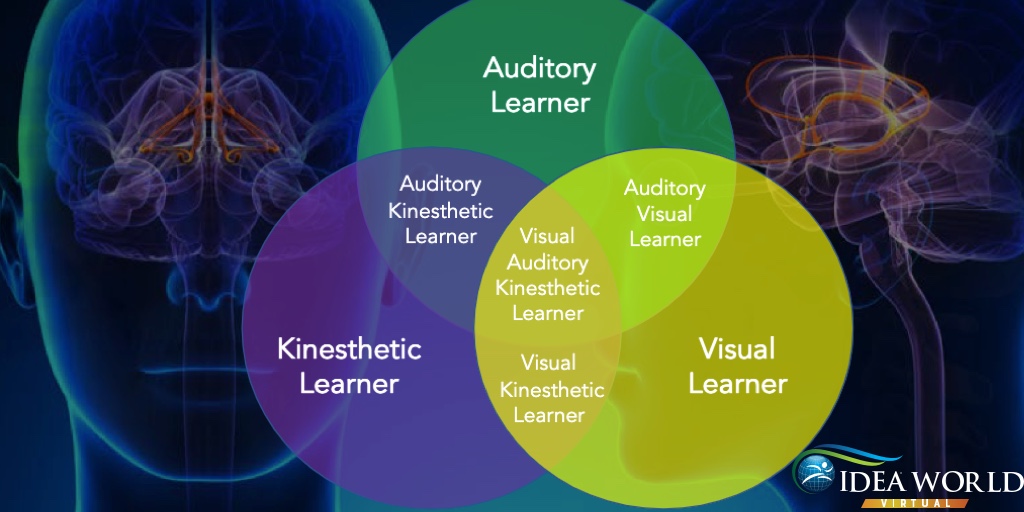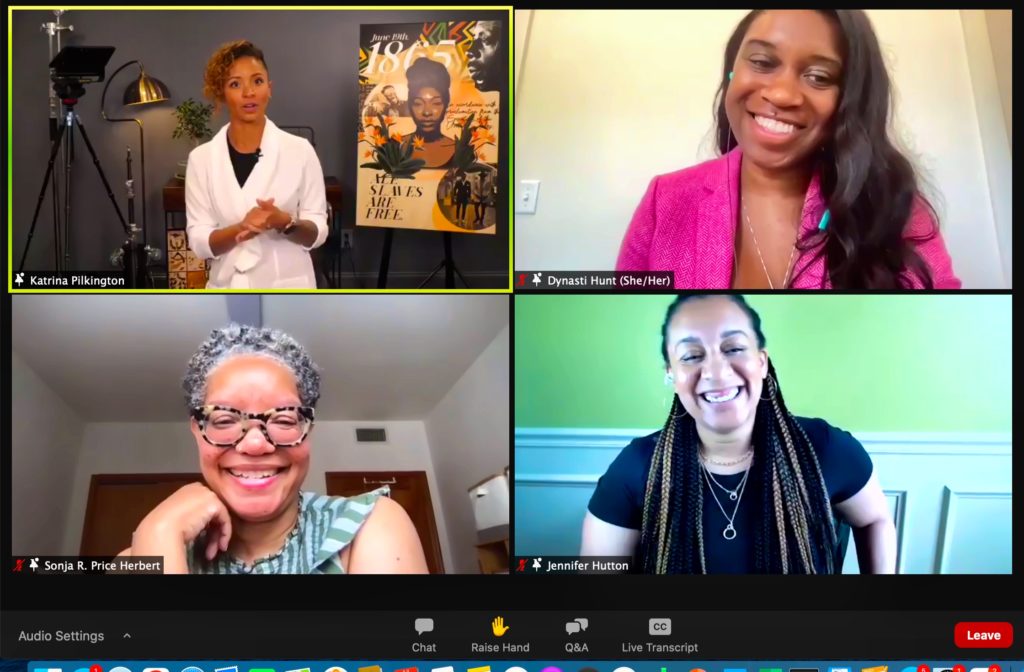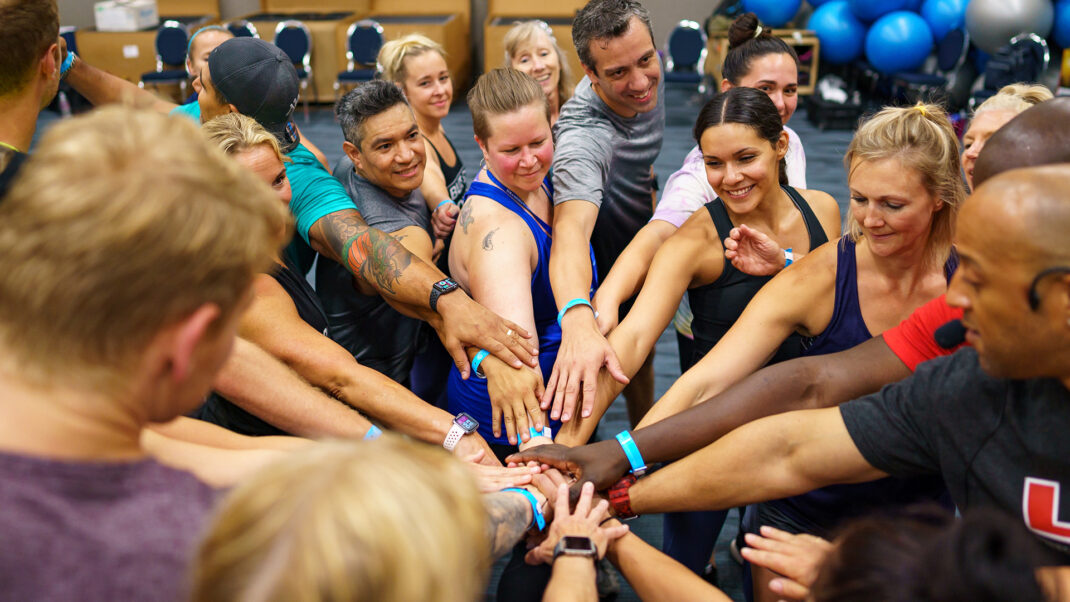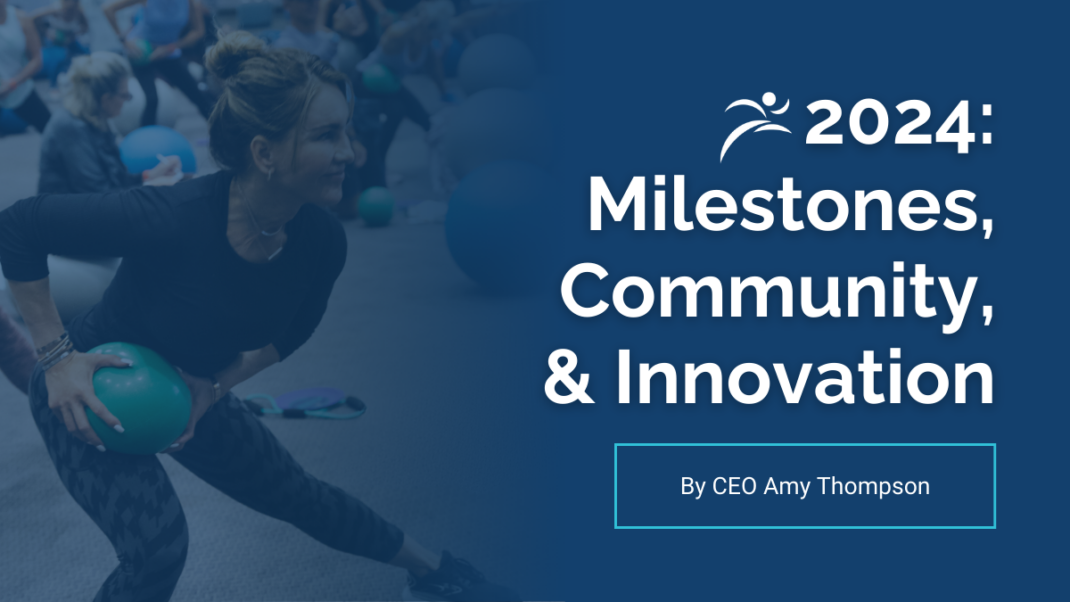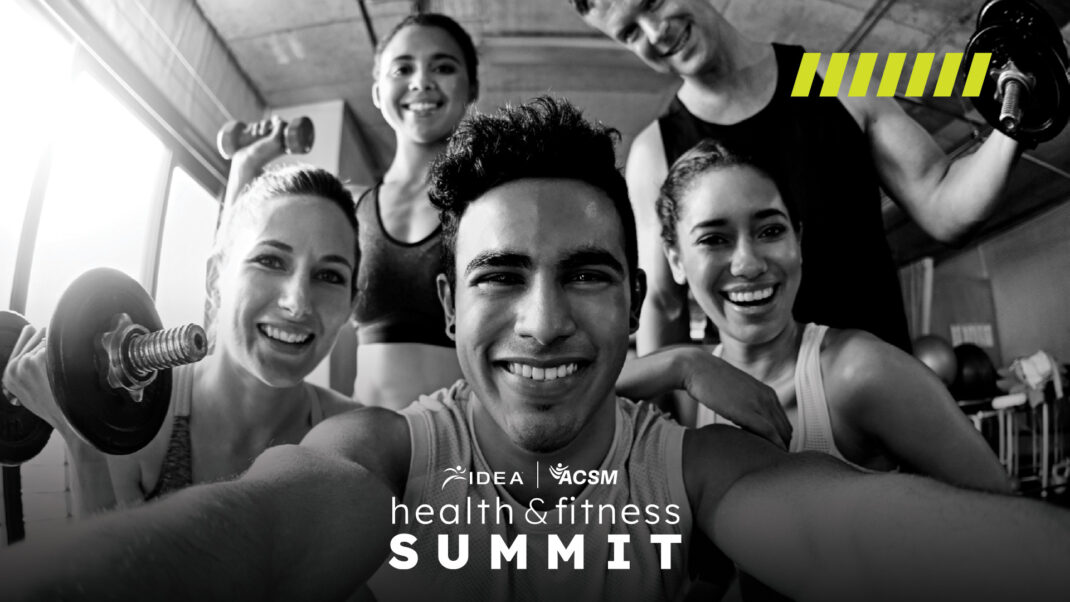Boss Up and Inspire the World to Fitness®
2021 IDEA World Virtual Day 1 delivers the goods.
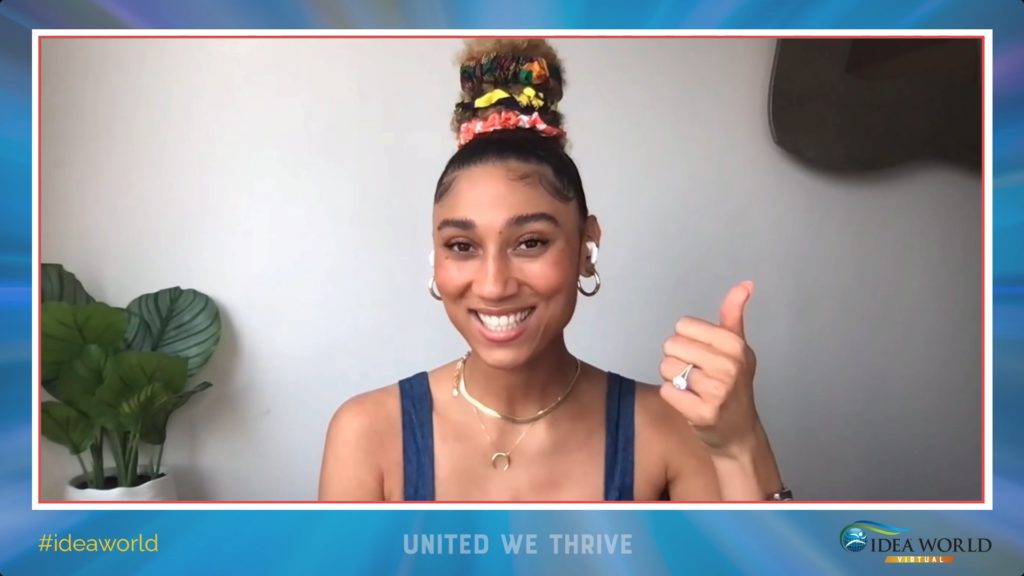
For the 39th time—and for the second straight year virtually because of the pandemic—IDEA World Convention is inspiring and educating thousands of fit pros around the globe. Though we may be weary of so much screen time after the toughest year this industry has ever seen, our craving for connection has drawn us together.
Fit pros are a resilient bunch who are getting on with it the best way we know how: We show up, laugh, learn, share, lift each other up and, collectively, grow stronger. United we thrive!
That’s why Peloton® star and Love Squad founder Ally Love kicking off this year’s program with her Basics of Bossing Up (#BBU) message was such a relevant start. As Love explained, #BBU is all about retracing steps to our core values and principles. It’s about resetting, recognizing, reestablishing and reclaiming yourself, your life and everything that’s important to you. When Love spoke of balance and harmony, she reminded us that each of the pieces and parts of our life are important in their own way—that we are the authors of our own stories—and that our energy is contagious. And crucial.
This year’s program is excellent (the low bar expected from IDEA), with a contemporary, diverse spin enriched with layers of je ne sais quoi that reflect the industry’s forced growing pains and our promise of greatness for the future. It’s fresh, real, sometimes raw and the stuff of “must do” if we are truly serious about meeting all people where they are.
Enjoy these highlights from today’s sessions, as seen through the eyes of IDEA editors.
- Keli Roberts helped fit pros bridge the gap between personal training and group exercise with her session on small-group program design, while Farel Hruska took participants through a glute-busting workout for those small groups to try. Both sessions offered evidence-based practices and creative ideas for making the most of the programming, as did Chan Gannaway’s foray into the perfect personal training session.
- With characteristic wry humor, Mark Fisher outlined The Four Things You Must Do Now to Grow Your Business in 2021. Among his expert pieces of advice? Ensure that you develop a compelling offer—one that gives new clients an obvious way to get started and a good reason to start right away. There’s no need to shy away from trial offers; properly developed, they will help your business grow.
- There was plenty of interaction throughout the morning, as well, including some valuable role-playing in the session on motivational interviewing and pertinent advice on navigating all the career reroutes fit pros have been faced with (Doris Thews, Kia Williams, MS).
- Eliza Kingsford provided an incredible balance of science and emotion in her session on client compliance (and why clients don’t always “stick with it”), including the idea that it is our belief system that determines our behavior and that behavior, in turn, reinforces the things we believe. Is it any wonder that behavior change is such a challenge?
- Merrithew™ and kinesiology ace PJ O’Clair gave #ideaworld attendees some simple, yet profound, ideas for a mat-based Pilates routine using a Conditioning Towel to maintain form. Ideal for those who are less flexible, the towel helps increase ROM of the joints and allows muscles to lengthen effectively. Scapular and shoulder stability are highlighted while core strength and stability are enhanced, enabling better performance in other physical activities.
Which learning style does your client best respond to?
- Do you know your client’s learning style? There are seven in all, but coaches Scott Hopson and Hayley Hollander pare it down to three to keep it simple: auditory, kinesthetic and visual. Chances are, your clients will absorb more with 1 or 2 of these styles. If they are not somewhere in the intersection of the spectrum (see art), chances are they’re missing cues you’re giving them.
- What would IDEA World be without a Len Kravitz, PhD, lecture? The University of New Mexico researcher and educator delivered this evidence-based take-home message to attendees from around the world about the magic of HIIT formats: “The higher your VO2max, the healthier you are! I probably wouldn’t have been able to tell you this a few years ago, but all the research now shows it. Help your clients to incrementally improve their fitness. It’s not about maintenance anymore, but more about long-term health through increased cardiovascular fitness. HIIT delivers that.”
- Athletes of all ages and abilities can benefit from a resistance training program, says Tony Nuñez, PhD. How? (1) Injury is inherent in athletic activity, and research shows that strength training can decrease the incidence of injury among athletes. (2) Muscle balance: We tend to overdevelop the anterior chain and underdevelop the posterior chain—targeted resistance training can improve imbalances. (3) Functional benefit of positive transfer to sport: A basic kettle bell swing for instance, builds power in the hips, which can translate to higher, more powerful jumping in sports.
- A challenging, yet inspiring, topic of the morning was presented by Tricia Murphy Madden and Alex McLean. In Classes for the Masses, they spoke of the profound need of our industry to expand beyond its cis-female origins and truly reach to others. Being aware of our language, practices and even the way we dress can make a difference. Murphy Madden pointed out that our industry is doing a great job with the 10% of the population we already serve and that it’s time to invite the other 90% into our world.
- In tandem, the panel on Tackling Racism and Discrimination in the Fitness Industry—facilitated by Katrina Pilkington, with panelists Jennifer Hutton, DPT, Sonja R. Price Herbert and Dynasti Hunt, MEd, MBA—examined how social injustice exists in professional environments throughout this country, including the fitness industry. The panel shared their experience with race, diversity, equity and inclusion in the fitness space and how impactful our roles can and should be. As Hunt summed up, “There are still a lot of individuals, as well as fitness and wellness businesses, who just haven’t taken the time to acknowledge that racism still exists in the industry. That’s a big barrier where people are still pretending, “‘No, no—not in the fitness space.’ Part of it is acknowledging that we have a problem, and that includes all of us.”
The morning hit so many high notes—and with such passion and grace—you knew that Ally Love would be proud. There was balance. And more important than balance, there was harmony.
- In Creating a Boutique Experience: Program Design for Functional Training Classes, Tina Marie Jaehnert, MA, and Leigh Wierichs, MFA, MS, presented a detailed explanation of everything a fitness entrepreneur needs to know when opening (or re-opening) a boutique-style fitness workout. The presenters favored circuit training for its ability to motivate and inspire, and they shared a “flow” system that could be modified in numerous ways to suit the situation. One piece of advice from Jaehnert: “Many fitness entrepreneurs do a lot of pre-planning, but they often forget to plan their marketing strategy. It’s so important to pay as much attention to this as you do to the brick-and-mortar aspect.”
- Lauren George, one of the presenters in the fast-paced, information-packed session Barre Triple Threat, reminded viewers that it’s important to take time to reconnect with students, especially as the world returns to fitness facilities. She recalled her first IDEA World experience and how touched she was that presenter Mindy Mylrea stood at the door and welcomed each individual. “That stuck with me,” George said. “If you want your class to pay attention, stay engaged and keep coming back, you have to show them you care.” George also recommended factoring in time after class to answer individual questions or share your social media handles.
- In her session on weight loss apps and virtual fitness support, Michelle Alencar, PhD, unearthed some disturbing stats about America’s pandemic-plus struggle with overweight and obesity. She gave us two distinct focal points: 1. There is a critical need for the care and knowledge of fitness professionals, and 2. virtual weight loss programming has boomed. Now a $1.4 billion industry, it has a projected annual growth of 6.6%. How will you tap into this?
- Fitness technology has upped the collective game dramatically in the past 3–5 years. Eve Fleck, MS, acknowledged how helpful new assessment apps and online tools are, but she encouraged attendees not to abandon old-school charts and tables, such as the Normative Data for the Balance Error Scoring System Test, which gauges static balance. “Whatever test, table or tool you use,” Fleck said, “always test for the five main components of fitness: muscular strength, muscular endurance, body composition, flexibility and cardiovascular endurance.”
- Hybrid training, or teaching classes or clients both in-person and virtually, has revealed areas where fitness professionals need to improve their cuing abilities. The screen, in short, adds a layer of distraction, and fitness professionals must learn how to overcome newfound obstacles. Sheldon McBee, MS, masterfully presented a treasure box of practical ideas for succinctly conveying your intentions. “You want your clients to have an exceptional experience every single time,” McBee said. “It doesn’t have to be diluted just because you’re training virtually. Answer the same questions and solve the same problems. People who are working virtually can get confused more easily, so keep that in mind. You cannot be too clear!”
- Other sessions delineated rich, complex concepts in profoundly accessible ways. Case in point: Michol Dalcourt’s exploration of agile strength and how to apply it to many different types of program design. He shared a “recipe” with other trainers: “Think about your current programming and your strength training days. Determine whether you want to focus on movement or muscular strength and then incorporate elements of agility. Add targeted, whole-body movement that keeps the body resilient and strong.”
Brains and bodies got a thorough workout thanks to a blockbuster day of unparalleled education, networking and brainstorming. The weekend could not be off to a better start.
Joy Keller
Joy Keller is the director of marketing communications & PR at IDEA, and has also served as executive editor of IDEA Fitness Journal, IDEA Fitness Manager, IDEA Pilates Today, and IDEA Fit Business Success. She is also a certified personal trainer, indoor cycling instructor and yoga teacher (RYT 200).
Sandy Todd Webster
For 22 years, Sandy Todd Webster was the chief architect of IDEA's content program - including the award-winning IDEA FITNESS JOURNAL and IDEA FOOD & NUTRITION TIPS - the industry's leading resources for fitness, wellness and nutrition professionals worldwide. She created, launched and nurtured these brands and many others during her productive and purposeful IDEA tenure. Sandy is a Rouxbe-certified professional plant-based cook and a Precision Nutrition Level 1 Coach who is pursuing a Master's degree in Sustainable Food Systems through The Culinary Institute of America (expected August 2024). She plans to combine these passions with her content expertise to continue inspiring others to make the world a more just, healthy and regenerative place.
